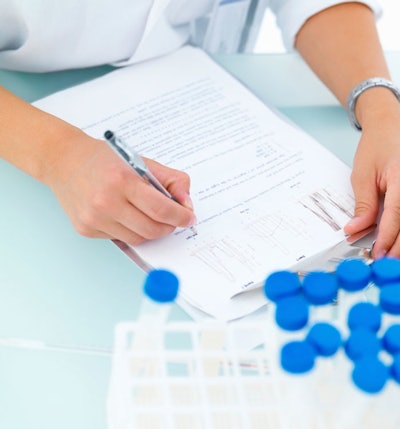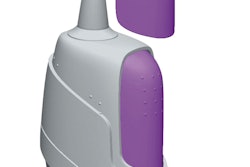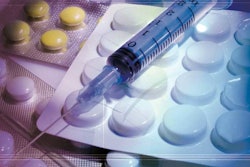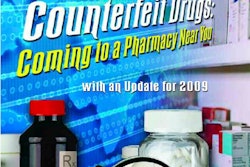
Best packaging projects
Project: Develop an innovative new medical device kit packaging platform to provide added utility in the clinical setting, to be environmentally friendly, and to offer significant cost savings.
Lesson: By speaking directly to the customer, a great deal of relevant information can be derived and incorporated into the new design.
Manager with a medical device company in the Western U.S.
In a follow-up discussion, this manager elaborated on his response by adding the following details: "This project involved going from packages as singles to groups of five, and then someone suggested we could carton them at that point. By cartoning them, we were able to remove five people from the line and save $500,000 a year. We also reduced the carton's footprint, and along with that changed how it sat on the shelf. The cartons contain five small form/fill/sealed thermoforms with a catheter in them. Before this project, we'd fill a large carton randomly with 50 of them dropped in manually. With cartoning, the individual packs are grouped and nested, neatly standing upright in a tall, narrow carton. It was such a radical change that our marketing people first surveyed our customers, and they preferred the new format. And because the products must hold sterility, it's also better that the packages don't rub against each other as in the bulk carton."
The manager indicated that the project was completed two years ago, but they also use the concept for their new catheters. "It was a minor change, but we saved half a million dollars a year," he added.
Project: Auditing a unit-dose form/fill/seal machine in the early 1980's.
Lesson: Container development deserves more attention and skills, as those for the quality conception of the content.
Mohamed Fathi Saffar, National Lab for Drug Quality Control (Tunis, Tunisia)
Project: A startup project in Amylin, OH, for the manufacturing of a Type II Diabetes drug. The Project's leadership, Amylin's philosophy, and the overall group of people resulted in a successful experience.
Lesson: Knowledgeable professionals will "think smarter and work harder" in what appears to be a difficult situation. Good people with good ideas exist everywhere, but projects that excel are those where all parties are considered equal and share accountability.
Anonymous
Project: Working to store liquid reagents in blisters and subsequently crush the blisters to accurately deliver a precise amount of liquid.
Lesson: There are ideal liquid volumes and blister geometries for a given blister diameter, and we must really consider how to crush them properly to ensure we get all of the liquid back out.
Anonymous
Project: Design and build a blister packaging line.
Lesson: Planning is the key of success; because there is no perfect project, I will always have a challenge.
Luis Diaz-Vega, Wyeth Pharmaceuticals Co.
Worst packaging projects
Project: Upgrade bottle-packaging line to increase efficiency and speed.
Lesson: Pay attention to small details; that can be the difference between success and failure.
Luis Diaz-Vega, Wyeth Pharmaceuticals Co.
Project: A master brand initiative that failed miserably.
Lesson: Poor leadership without a foundational understanding of the project's scope can be detrimental to the success of any program.
Anonymous
Project: Packaging a product that realized only a 50% success rate.
Lesson: Upper management doesn't always know what works on a production line.
Anonymous
Project: Revalidate packaging that was developed before the latest revision to ISO11607.
Lesson: When revalidating product in production, perform a full-scale screening with a large sample size. A Plan B needs to be handy before revalidation.
Anonymous
Project: Inherited a blow/fill/seal line in the Philippines designed by others and not well planned—every start-up step became a challenge
Lesson: Take nothing for granted when you inherit a project.
Ralph Dillon, Compliance Surety Associates
Project: Quality assessment of generic drug products in the early 1980's
Lesson: In a feasibility study of a product, the packaging is essential.
Mohamed Fathi Saffar, National Lab for Drug Quality Control (Tunis, Tunisia)
Project: Leadership was waning as the direction and scope of the project was continually changing. All parties felt frustrated about what was actually being accomplished and what, if any, was the goal.
Lesson: Plan and focus on the goal for all involved and follow the plan set by those given project management.
Anonymous
Project: Auto loading of medical products.
Lesson: Check out vendors carefully.
Anonymous
This last respondent agreed to divulge more about his project in a follow-up interview: It so happened that after a successful project with a particular vendor, the engineer looked to go back to the same vendor for this new project. However, he never received a quote. He then selected an alternative vendor before his boss pointed out that the vendor was using trade secrets from their company. Next, he sought a third vendor that was acceptable and started the project. Unfortunately, that vendor began employee layoffs and went out of business midway through the project. “It was just ugly,” he said. “We ended up bringing it in-house and keeping the robot, but the rest of the [equipment and components] were thrown away."
The respondent subsequently heard back from his first vendor—there had been some easily explained confusion, which was why the medical products company had not heard from the vendor before—and that vendor successfully took on the project.
Survey Methodology
Several healthcare packaging professionals participated in an April 2009 Packworld.com survey about packaging projects that went out to Packaging World magazine. Healthcare Packaging is a sister publication to Packaging World. The survey asked packaging pros about their best and worst project experiences. Responses have been edited for clarity.
-By Rick Lingle, Technical Editor, Packaging World
Project: Develop an innovative new medical device kit packaging platform to provide added utility in the clinical setting, to be environmentally friendly, and to offer significant cost savings.
Lesson: By speaking directly to the customer, a great deal of relevant information can be derived and incorporated into the new design.
Manager with a medical device company in the Western U.S.
In a follow-up discussion, this manager elaborated on his response by adding the following details: "This project involved going from packages as singles to groups of five, and then someone suggested we could carton them at that point. By cartoning them, we were able to remove five people from the line and save $500,000 a year. We also reduced the carton's footprint, and along with that changed how it sat on the shelf. The cartons contain five small form/fill/sealed thermoforms with a catheter in them. Before this project, we'd fill a large carton randomly with 50 of them dropped in manually. With cartoning, the individual packs are grouped and nested, neatly standing upright in a tall, narrow carton. It was such a radical change that our marketing people first surveyed our customers, and they preferred the new format. And because the products must hold sterility, it's also better that the packages don't rub against each other as in the bulk carton."
The manager indicated that the project was completed two years ago, but they also use the concept for their new catheters. "It was a minor change, but we saved half a million dollars a year," he added.
Project: Auditing a unit-dose form/fill/seal machine in the early 1980's.
Lesson: Container development deserves more attention and skills, as those for the quality conception of the content.
Mohamed Fathi Saffar, National Lab for Drug Quality Control (Tunis, Tunisia)
Project: A startup project in Amylin, OH, for the manufacturing of a Type II Diabetes drug. The Project's leadership, Amylin's philosophy, and the overall group of people resulted in a successful experience.
Lesson: Knowledgeable professionals will "think smarter and work harder" in what appears to be a difficult situation. Good people with good ideas exist everywhere, but projects that excel are those where all parties are considered equal and share accountability.
Anonymous
Project: Working to store liquid reagents in blisters and subsequently crush the blisters to accurately deliver a precise amount of liquid.
Lesson: There are ideal liquid volumes and blister geometries for a given blister diameter, and we must really consider how to crush them properly to ensure we get all of the liquid back out.
Anonymous
Project: Design and build a blister packaging line.
Lesson: Planning is the key of success; because there is no perfect project, I will always have a challenge.
Luis Diaz-Vega, Wyeth Pharmaceuticals Co.
Worst packaging projects
Project: Upgrade bottle-packaging line to increase efficiency and speed.
Lesson: Pay attention to small details; that can be the difference between success and failure.
Luis Diaz-Vega, Wyeth Pharmaceuticals Co.
Project: A master brand initiative that failed miserably.
Lesson: Poor leadership without a foundational understanding of the project's scope can be detrimental to the success of any program.
Anonymous
Project: Packaging a product that realized only a 50% success rate.
Lesson: Upper management doesn't always know what works on a production line.
Anonymous
Project: Revalidate packaging that was developed before the latest revision to ISO11607.
Lesson: When revalidating product in production, perform a full-scale screening with a large sample size. A Plan B needs to be handy before revalidation.
Anonymous
Project: Inherited a blow/fill/seal line in the Philippines designed by others and not well planned—every start-up step became a challenge
Lesson: Take nothing for granted when you inherit a project.
Ralph Dillon, Compliance Surety Associates
Project: Quality assessment of generic drug products in the early 1980's
Lesson: In a feasibility study of a product, the packaging is essential.
Mohamed Fathi Saffar, National Lab for Drug Quality Control (Tunis, Tunisia)
Project: Leadership was waning as the direction and scope of the project was continually changing. All parties felt frustrated about what was actually being accomplished and what, if any, was the goal.
Lesson: Plan and focus on the goal for all involved and follow the plan set by those given project management.
Anonymous
Project: Auto loading of medical products.
Lesson: Check out vendors carefully.
Anonymous
This last respondent agreed to divulge more about his project in a follow-up interview: It so happened that after a successful project with a particular vendor, the engineer looked to go back to the same vendor for this new project. However, he never received a quote. He then selected an alternative vendor before his boss pointed out that the vendor was using trade secrets from their company. Next, he sought a third vendor that was acceptable and started the project. Unfortunately, that vendor began employee layoffs and went out of business midway through the project. “It was just ugly,” he said. “We ended up bringing it in-house and keeping the robot, but the rest of the [equipment and components] were thrown away."
The respondent subsequently heard back from his first vendor—there had been some easily explained confusion, which was why the medical products company had not heard from the vendor before—and that vendor successfully took on the project.
Survey Methodology
Several healthcare packaging professionals participated in an April 2009 Packworld.com survey about packaging projects that went out to Packaging World magazine. Healthcare Packaging is a sister publication to Packaging World. The survey asked packaging pros about their best and worst project experiences. Responses have been edited for clarity.
-By Rick Lingle, Technical Editor, Packaging World





















